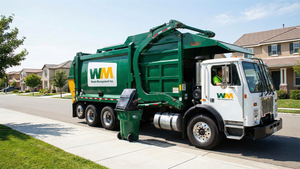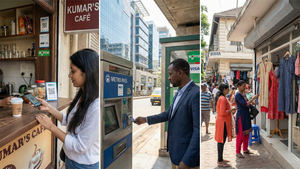On 9 January 2023, during the first attempted orbital launch from the United Kingdom, Virgin Orbit’s LauncherOne experienced an anomaly, leading to a premature shutdown of the rocket and failure to reach orbit.
Virgin Orbit began its investigation into the failure within hours of the conclusion of the mission, under the leadership of distinguished aerospace veteran Jim Sponnick and Virgin Orbit Chief Engineer Chad Foerster. The failure investigation team received immediate access to extensive telemetry data collected during the mission from the ground stations in the UK, Ireland, and Spain, as well as systems onboard its carrier aircraft, providing a robust dataset that the investigation team has thoroughly examined.
The investigation includes oversight by U.S. Federal Aviation Administration and the UK Air Accidents Investigation Branch (acting as the Space Accident Investigation Authority (SAIA) for the United Kingdom) and also participation by personnel from the Department of Defense, National Transportation Safety Board, and the National Reconnaissance Office. The U.K. Civil Aviation Authority will also be involved in investigation process.
The investigation has confirmed that the Virgin Orbit team successfully executed pre-flight preparations, carrier aircraft takeoff, captive carry flight, and rocket release. The ignition, first stage flight, stage separation, second stage ignition, and fairing deployment of the LauncherOne rocket were nominal. Each of these milestones constituted a first-of-its-kind achievement for any orbital launch attempt from western Europe. LauncherOne performed successfully on all four prior operational flights, accurately delivering 33 payloads to their required orbits.
The investigation team is utilizing a comprehensive fault tree, a very detailed timeline, and several other products to conduct the investigation in a rigorous manner. Key observations at this point in the investigation:
- The data is indicating that from the beginning of the second stage first burn, a fuel filter within the fuel feedline had been dislodged from its normal position.
- Additional data shows that the fuel pump that is downstream of the filter operated at a degraded efficiency level, resulting in the Newton 4 engine being starved for fuel. Performing in this anomalous manner resulted in the engine operating at a significantly higher than rated engine temperature.
- Components downstream and in the vicinity of the abnormally hot engine eventually malfunctioned, causing the second stage thrust to terminate prematurely.
- The early thrust termination ended the mission, and the second stage and its payloads fell back to Earth, landing in the approved safety corridor in the Atlantic Ocean.
The investigation is employing a detailed action plan to develop key analyses and tests to replicate flight conditions and to aid in determining the root cause or causes of the failure. All potentially credible scenarios, including the one described above are being investigated. Numerous tests are underway to support the investigation and help lead to definitive conclusions. Ultimately, all credible causes of the failure will be addressed prior to the next LauncherOne mission.
Dan Hart, CEO of Virgin Orbit, said: “In space launch, a failure is painful for all involved. Intense disappointment gets quickly channeled into the motivation to dig into the cause, to understand all contributing elements and to thereby get back to flight with a better system and a wiser team. Our investigation is not yet complete; the team is hard at work and we’ll pursue the cause and contributors to wherever the system analysis takes us. However, with many clear clues from extensive data assessment now understood, we are modifying our next rocket with a more robust filter and we are looking broadly to assure that all credible contributors to mission failure are rooted out and addressed. With those modifications being incorporated on our factory floor, we will proceed cautiously toward the launch of our next rocket, which is well into the integration and test process.”
Virgin Orbit’s next launch will occur from the Mojave Air and Space Port in California for a commercial customer. The company anticipates announcing more details about that mission in the coming weeks.
ABOUT VIRGIN ORBIT
Virgin Orbit Holdings, Inc (Nasdaq: VORB) operates one of the most flexible and responsive space launch systems ever built. Founded by Sir Richard Branson in 2017, the Company began commercial service in 2021, and has already delivered commercial, civil, national security, and international satellites into orbit. Virgin Orbit’s LauncherOne rockets are designed and manufactured in Long Beach, California, and are air-launched from a modified 747-400 carrier aircraft that allows Virgin Orbit Holdings, Inc to operate from locations all over the world in order to best serve each customer’s needs. Learn more at www.virginorbit.com and visit us on LinkedIn, on Twitter @virginorbit, and on Instagram @virgin.orbit.
CAUTIONARY STATEMENT REGARDING FORWARD-LOOKING STATEMENTS
This press release contains certain forward-looking statements within the meaning of the federal securities laws. These forward-looking statements generally are identified by the words “believe,” “project,” “expect,” “anticipate,” “estimate,” “intend,” “strategy,” “future,” “opportunity,” “plan,” “may,” “should,” “will,” “would,” “will be,” “will continue,” “will likely result,” and similar expressions. Forward-looking statements are predictions, projections and other statements about future events that are based on current expectations and assumptions and, as a result, are subject to risks and uncertainties. Many factors could cause actual future events to differ materially from the forward-looking statements in this press release, including but not limited to the ability of Virgin Orbit Holdings, Inc. ("Virgin Orbit" or the “Company”) to access sources of capital; its ability to grow market share in the developing space economy; market acceptance of its current and planned products and services and ability to achieve sufficient production volumes, as well as the factors, risks and uncertainties included in the Company’s Quarterly Report on Form 10-Q for the period ended Sept. 30, 2022 as well as in the Company’s subsequent filings with the Securities and Exchange Commission (the “SEC”), accessible on the SEC’s website at www.sec.gov and the Investor Information section of the Company’s website at www.virginorbit.com. Forward-looking statements speak only as of the date they are made. Readers are cautioned not to put undue reliance on forward-looking statements, and Virgin Orbit assumes no obligation and does not intend to update or revise these forward-looking statements, whether as a result of new information, future events, or otherwise. Virgin Orbit gives no assurance that it will achieve its expectations.
View source version on businesswire.com: https://www.businesswire.com/news/home/20230214005855/en/
Contacts
MEDIA ENQUIRES:
Virgin Orbit
Alison Patch, Senior Director of Communications (US)
+1 949-616-2504
Alison.patch@virginorbit.com





